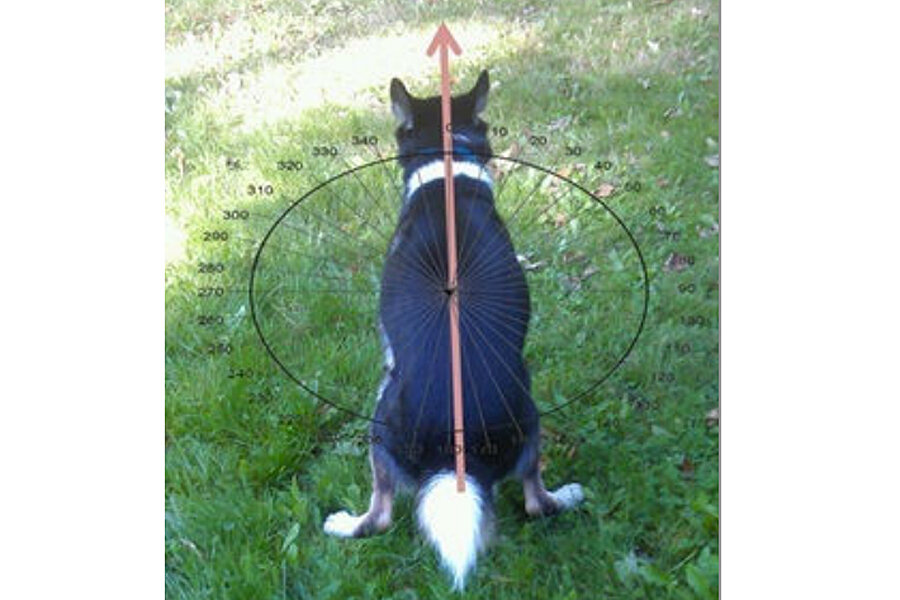Scientists observe dogs relieving themselves, discover something amazing
A dog answering nature's call might also be doing something more subtle.
A team of Czech and German researchers has found that, all else being equal, when a dog wants to go powder its rhinarium, it will tend to do so while standing in alignment with Earth's magnetic field.
The two-year study, which involved 37 dog owners, 70 dogs, and 7,475 instances of the animals relieving themselves outside while their owners dutifully took notes, is the first demonstration of magnetic sensitivity in dogs. The authors write that their findings, which appeared last week in the journal Frontiers in Zoology, "open new horizons for biomagnetic research."
The scientists, who are affiliated with Germany's University of Duisburg-Essen and the Czech University of Life Sciences, asked dog owners in the two countries to measure the alignment of their dogs' thoracic spines as the pets fed, rested, urinated, and defecated. They found observations of the final two activities to be the most promising, noting that excretion "seems to be least prone to be affected by the surroundings."
They then compared the data to the prevailing geomagnetic conditions at the time of each instance. The results: When our planet's magnetic field is quiet, dogs are more likely to do their business while standing along a north-south axis. Indeed, the data suggested that the animals were actively avoiding the east-west axis.
Magnetoception – the sense that allows an organism to determine its position relative to a magnetic field – has been documented among bacteria, molluscs, insects, chickens, and, famously, homing pigeons. Among mammals, some research indicates that the ability could also exist among some species of rodents, bats, foxes, cattle, and deer. Humans are not believed to have a magnetic sense, although a 2011 study uncovered a protein in our eyes that is apparently sensitive to Earth's magnetic field.
The scientists admit that they don't know the reason for the dogs' apparent polar inclination, or what's going through those canine minds as they circle around before assuming the position.
"It is still enigmatic," they write, "why the dogs do align at all, whether they do it 'consciously' (i.e., whether the magnetic field is sensorial perceived (the dogs 'see', 'hear' or 'smell' the compass direction or perceive it as a haptic stimulus) or whether its reception is controlled on the vegetative level (they “feel better/more comfortable or worse/less comfortable” in a certain direction)."






